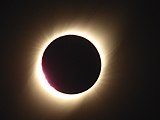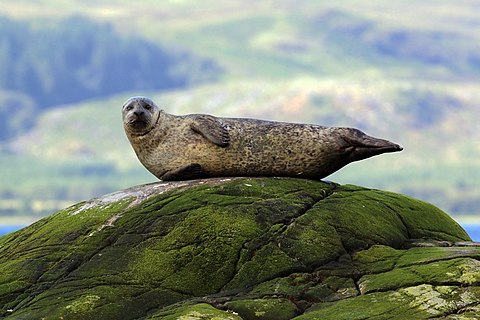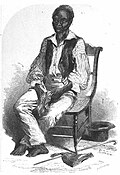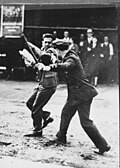Wikipedia:Main Page history/2019 July 5
From today's featured articleEve Russell is a fictional character on the American soap opera Passions, which aired on NBC from 1999 to 2007 and on DirecTV in 2007–08. Created by the soap's head writer, James E. Reilly, Eve was played by Tracey Ross for the series' entire run. In 2003, actresses Amanda Maiden and Kimberly Kevon Williams played the character in flashbacks to her childhood and her time as a nightclub singer. Ross was initially hesitant to audition for the role following her negative experience on Ryan's Hope, but was attracted to the show after learning about its supernatural and fantasy elements. Her casting was part of NBC's attempt to include a racially diverse ensemble on daytime television. She based her performance on Joanne Woodward's role in the 1957 film The Three Faces of Eve and Catherine Halsey from Ayn Rand's 1943 novel, The Fountainhead. Eve, part of Passions' Russell family, is introduced as a perfect wife and mother, but her desperation eventually leads to the breakup of her marriage and family. Ross received eight nominations for the NAACP Image Award for Outstanding Actress in a Daytime Drama Series, winning at the 38th NAACP Image Awards. (Full article...)
Part of the Russell family (Passions) series, one of Wikipedia's featured topics.
Recently featured:
Did you know...
|
In the news Solar eclipse viewed from La Serena, Chile
On this day
Nicéphore Niépce (d. 1833) · John Curtin (d. 1945) · Megan Rapinoe (b. 1985) |
From today's featured list
The 2014 Tour de France was contested by 22 teams. It was the 101st edition of the race, one of cycling's Grand Tours. All of the eighteen UCI ProTeams were automatically invited and obliged to attend the race. On 14 January 2015, the organiser of the Tour, Amaury Sport Organisation (ASO), announced the four second-tier UCI Professional Continental teams given wildcard invitations: Cofidis, NetApp–Endura, Bretagne–Séché Environnement and IAM Cycling. Each squad was allowed a maximum of nine riders, therefore the start list contained a total of 198 riders. Of these, 47 were riding the Tour de France for the first time. The total number of riders that finished the race was 174, from 34 countries. Marcel Kittel of Giant–Shimano was the first rider to wear the general classification's yellow jersey after winning stage one. He lost it after the next stage to Vincenzo Nibali (pictured) of Astana, who won the stage. Nibali held the race lead until the end of the ninth stage, when it was taken by Lotto–Belisol's Tony Gallopin. The yellow jersey returned to Nibali the following stage; he held it until the conclusion of the race. (Full list...)
Today's featured picture

|
|
The harbour seal (Phoca vitulina), also known as the common seal, is a true seal in the genus Phoca, found along temperate and Arctic marine coastlines in the Northern Hemisphere. The most widely distributed species of pinniped, harbour seals are found in coastal waters of the northern Atlantic and Pacific Oceans and the Baltic and North Seas. They are brown, silvery white, tan or grey, with distinctive V-shaped nostrils. An adult can attain a length of 1.85 m (6.1 ft) and a mass of 132 kg (291 lb). Blubber under the seal's skin helps to maintain body temperature. Harbour seals stick to familiar resting spots or haul-out sites, generally rocky areas, where they are protected from adverse weather conditions and predation, near a foraging area. Males may fight over mates underwater or on land. After a nine-month gestation, females bear a single pup, for which they care alone. Pups can weigh up to 16 kg (35 lb) and are able to swim and dive within hours of birth. They develop quickly on their mothers' fat-rich milk and are weaned after four to six weeks. The global population of harbour seals is 350,000 to 500,000, but subspecies in certain habitats are threatened. This picture, taken in 2015, shows a harbour seal off the island of Lismore in Scotland. Photograph credit: Charles J. Sharp
Recently featured:
|
Other areas of Wikipedia
- Community portal – Bulletin board, projects, resources and activities covering a wide range of Wikipedia areas.
- Help desk – Ask questions about using Wikipedia.
- Local embassy – For Wikipedia-related communication in languages other than English.
- Reference desk – Serving as virtual librarians, Wikipedia volunteers tackle your questions on a wide range of subjects.
- Site news – Announcements, updates, articles and press releases on Wikipedia and the Wikimedia Foundation.
- Village pump – For discussions about Wikipedia itself, including areas for technical issues and policies.
Wikipedia's sister projects
Wikipedia is hosted by the Wikimedia Foundation, a non-profit organization that also hosts a range of other projects:
Free media repository
Wiki software development
Wikimedia project coordination
Free textbooks and manuals
Free knowledge base
Free-content news
Collection of quotations
Free-content library
Directory of species
Free learning materials and activities
Free travel guide
Dictionary and thesaurus



